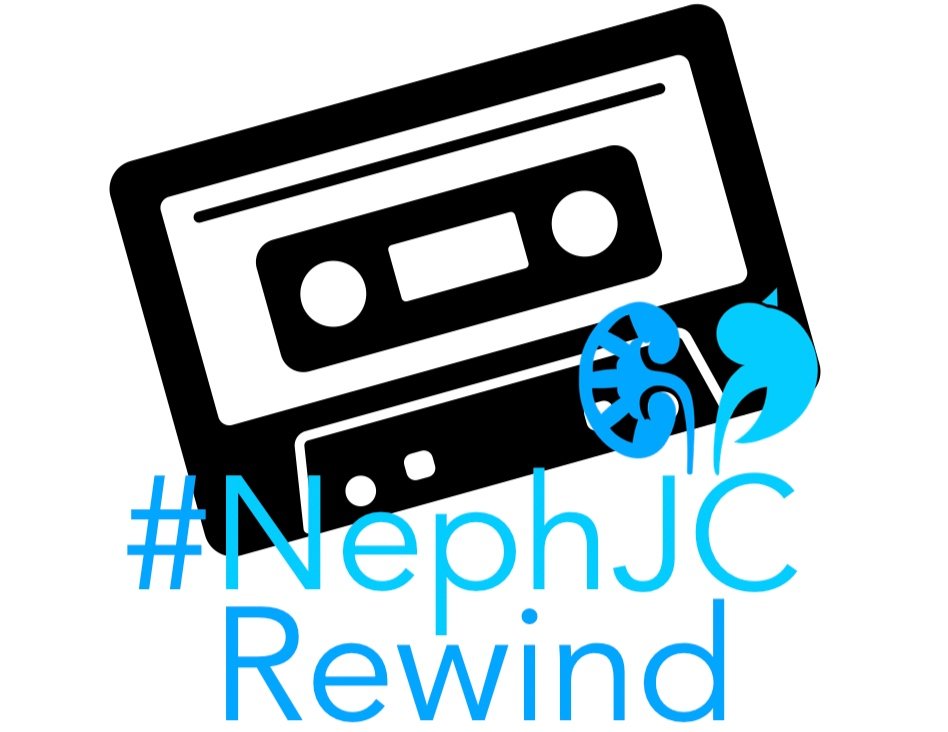Former NSMC intern, Michelle Starr hit gold with a great study at this year’s Kidney Week, in fact she is one of the 16 abstracts that was presented with simultaneous publication. Her’s is in JAMA Peds. She reexamined the RIVUR study looking at reflux and febrile UTIs from 2014. NephJC looked at the RIVUR study in our first year, making this a perfect fit for NephJC Rewind.
RIVUR was the seventh study NephJC analyzed. It is so old we were still building individual pages, rather than just using SquareSpace’s blogging engine for each chat. It was a nice, but ultimately, not a scalable solution and we abandoned it late in our first year. You can find the summary, written by pediatric nephrologist and publishing powerhouse, Pascale Lane, here.
The RIVUR investigators randomized children with reflux and at least one febrile UTI (culture confirmed) to either Tmp/Smx prophylaxis or matching placebo. Subjects went for a renal dimercaptosuccinic acid (DMSA) scans at baseline and 1 and 2 years later. These scans (the gold standard for kidney scars) were read and scored centrally by two pediatric nuclear medicine radiologists.
After two years the investigators found that the antibiotic reduced febrile illness but had no effect on renal scarring.
Of note, the original investigators did not look at eGFR, this is where Michelle and the current study comes in.
JAMA Pediatr 2024 Oct 24. doi: 10.1001/jamapediatrics.2024.4546. Online ahead of print.
Glomerular Filtration Rate Changes Following UTI in Children With Vesicoureteral Reflux
David S Hains 1, Michelle C Starr 1, Andrew L Schwaderer 1
PMID: 39446735
Here is a summary of the research letter in JAMA Peds from ChaptGPT:
Alright, buckle up, folks! We've got a new JAMA Pediatrics article on deck looking at what happens to GFR in kids with vesicoureteral reflux (VUR) after a UTI.
Background:
VUR is that friendly neighborhood pediatric kidney anomaly where urine flows the wrong way, which for some unfortunate kids translates into repeated UTIs, and here’s the kicker: kidney scarring. Scarring's no joke since it can knock down that precious glomerular filtration rate (eGFR) over time.
The RIVUR Study (With a Twist):
Remember the RIVUR trial? They took kids with VUR and tried antibiotic prophylaxis to prevent UTIs and, by extension, kidney scarring. The grand reveal? No big difference in scarring on the fancy DMSA scans, but no one looked at how individual GFRs changed over time... until now.
What They Did:
This gang of researchers went back to RIVUR, grabbed kids with serum creatinine measurements at both the start and end, and then did a little subtraction magic to see how much eGFR changed after two years. They crunched numbers, adjusted for factors like age and bladder issues, and split kids into groups based on their UTI stats.
Results:
Out of 188 participants, here’s what went down:
Kids with more than one UTI: Their eGFR dropped by 12.3 mL/min/1.73 m² more than those with ≤1 UTI. More UTIs, more GFR hurt.
Placebo Group + Repeat Offender UTIs: Things were worse. More than one febrile UTI led to a 27 mL/min/1.73 m² eGFR nosedive!
Antibiotics? Turns out, those little prophylactic warriors might shield GFR by blunting the AKI-style hits from UTIs.
Takeaway:
Here's what’s fascinating: we’re seeing kidney hit after kidney hit. These recurrent UTIs aren't just some innocent fever and pyuria party; they're leaving permanent marks on GFR. And if DMSA scans aren’t picking it up? Looks like we’ve been letting kids “pass” with clean imaging when eGFR's over here waving red flags.
The Bottom Line:
This study doesn't *prove* we need a rethink on antibiotic prophylaxis in VUR kids, but it's a compelling hypothesis-generator. Could eGFR be our next DMSA? Or even better, our go-to for catching subclinical kidney harm? Only more studies will tell, but hey, it looks like we’re onto something big.




